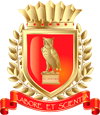Andrei Dmitrievich Sakharov
КомментарииПолная версия работы доступна во вкладке "Файлы работы" в формате PDF
Andrei Dmitrievich Sakharov 21 May 1921 – 14 December 1989 was a Russian nuclear physicist, dissident, and activist for disarmament, peace and human rights.[1]
He became renowned as the designer of the Soviet Union's RDS-37, a codename for Soviet development of thermonuclear weapons. Sakharov later became an advocate of civil liberties and civil reforms in the Soviet Union, for which he faced state persecution; these efforts earned him the Nobel Peace Prize in 1975. The Sakharov Prize, which is awarded annually by the European Parliament for people and organizations dedicated to human rights and freedoms, is named in his honor.[2]
Biography
Sakharov was born in Moscow on May 21, 1921. His father was Dmitri Ivanovich Sakharov, a private school physics teacher and an amateur pianist. His father later taught at the Second Moscow State University. Andrei's grandfather Ivan had been a prominent lawyer in the Russian Empire who had displayed respect for social awareness and humanitarian principles (including advocating the abolition of capital punishment) that would later influence his grandson. Sakharov's mother was Yekaterina Alekseyevna Sakharova, a great-granddaughter of the prominent military commander Alexey Semenovich Sofiano (who was of Greek ancestry). Sakharov's parents and paternal grandmother, Maria Petrovna, largely shaped his personality. His mother and grandmother were churchgoers; his father was a nonbeliever. When Andrei was about thirteen, he realized that he did not believe, but in later life he unequivocally described his religious feeling.
Development of thermonuclear devices
After World War II, he researched cosmic rays. In mid-1948 he participated in the Soviet atomic bomb project under Igor Kurchatov and Igor Tamm. Sakharov's study group at FIAN in 1948 came up with a second concept in August–September 1948. Adding a shell of natural, unenriched uranium around the deuterium would increase the deuterium concentration at the uranium-deuterium boundary and the overall yield of the device, because the natural uranium would capture neutrons and itself fission as part of the thermonuclear reaction. This idea of a layered fission-fusion-fission bomb led Sakharov to call it the sloika, or layered cake.The first Soviet atomic device was tested on August 29, 1949. After moving to Sarov in 1950, Sakharov played a key role in the development of the first megaton-range Soviet hydrogen bomb using a design known as Sakharov's Third Idea in Russia and the Teller–Ulam design in the United States. Before his Third Idea, Sakharov tried a "layer cake" of alternating layers of fission and fusion fuel. The results were disappointing, yielding no more than a typical fission bomb. However the design was seen to be worth pursuing because deuterium is abundant and uranium is scarce, and he had no idea how powerful the US design was. Sakharov realised that in order to cause the explosion of one side of the fuel to symmetrically compress the fusion fuel, a mirror could be used to reflect the radiation. The details had not been officially declassified in Russia when Sakharov was writing his memoirs, but in the Teller–Ulam design, soft X-rays emitted by the fission bomb were focused onto a cylinder of lithium deuteride to compress it symmetrically. This is called radiation implosion. The Teller–Ulam design also had a secondary fission device inside the fusion cylinder to assist with the compression of the fusion fuel and generate neutrons to convert some of the lithium to tritium, producing a mixture of deuterium and tritium. Sakharov's idea was first tested as RDS-37 in 1955. A larger variation of the same design which Sakharov worked on was the 50 Mt Tsar Bomba of October 1961, which was the most powerful nuclear device ever detonated.
Support for peaceful use of nuclear technology
In 1950 he proposed an idea for a controlled nuclear fusion reactor, the tokamak, which is still the basis for the majority of work in the area. Sakharov, in association with Tamm, proposed confining extremely hot ionized plasma by torus shaped magnetic fields for controlling thermonuclear fusion that led to the development of the tokamak device.
Magneto-implosive generators
In 1951 he invented and tested the first explosively pumped flux compression generators, compressing magnetic fields by explosives. He called these devices MK (for MagnetoKumulative) generators. The radial MK-1 produced a pulsed magnetic field of 25 megagauss (2500 teslas). The resulting helical MK-2 generated 1000 million amperes in 1953.
Sakharov then tested a MK-driven "plasma cannon" where a small aluminum ring was vaporized by huge eddy currents into a stable, self-confined toroidal plasmoid and was accelerated to 100 km/s. Sakharov later suggested replacing the copper coil in MK generators with a large superconductor solenoid to magnetically compress and focus underground nuclear explosions into a shaped charge effect. He theorized this could focus 1023 protons per second on a 1 mm2 surface.
Political leader
In 1988, Sakharov was given the International Humanist Award by the International Humanist and Ethical Union.[49] He helped to initiate the first independent legal political organizations and became prominent in the Soviet Union's growing political opposition. In March 1989, Sakharov was elected to the new parliament, the All-Union Congress of People's Deputies and co-led the democratic opposition, the Inter-Regional Deputies Group. In November the head of the KGB reported to Mikhail Gorbachev on Sakharov's encouragement and support for the coal-miners' strike in Vorkuta.[50]
Death
Sakharov's grave, 1990
Soon after 21:00 on 14 December 1989, Sakharov went to his study to take a nap before preparing an important speech he was to deliver the next day in the Congress. His wife went to wake him at 23:00 as he had requested but she found Sakharov dead on the floor. According to the notes of Yakov Rapoport, a senior pathologist present at the autopsy, it is most likely that Sakharov died of an arrhythmia consequent to dilated cardiomyopathy at the age of 68.[51] He was interred in the Vostryakovskoye Cemetery in Moscow.
